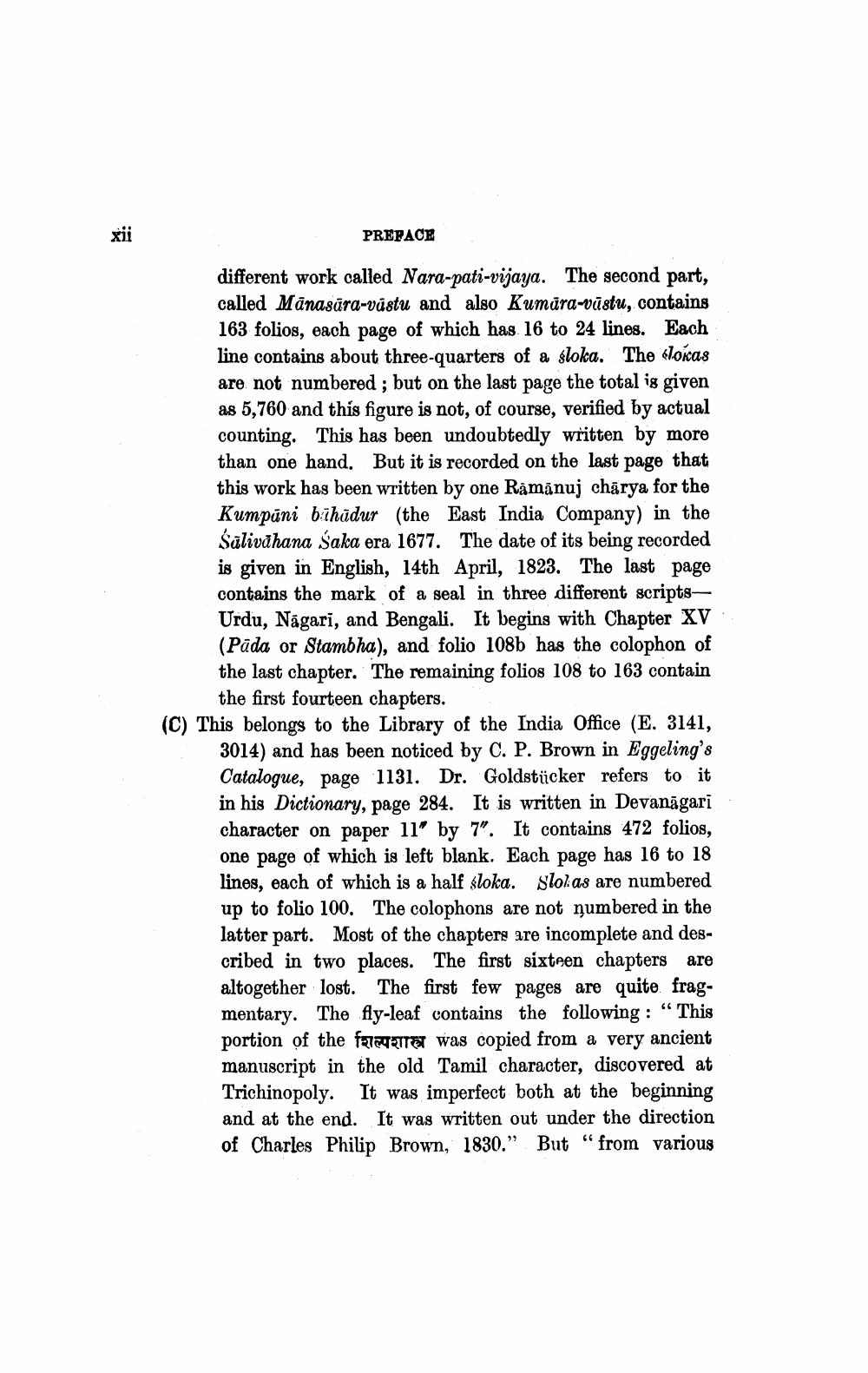________________
xii
PREFACE
different work called Nara-pati-vijaya. The second part, called Manasara-vastu and also Kumāra-vāstu, contains 163 folios, each page of which has 16 to 24 lines. Each line contains about three-quarters of a sloka. The lokas are not numbered; but on the last page the total is given as 5,760 and this figure is not, of course, verified by actual counting. This has been undoubtedly written by more than one hand. But it is recorded on the last page that this work has been written by one Ramanuj charya for the Kumpāni bihudur (the East India Company) in the Salivahana Saka era 1677. The date of its being recorded is given in English, 14th April, 1823. The last page contains the mark of a seal in three different scriptsUrdu, Nagari, and Bengali. It begins with Chapter XV (Pada or Stambha), and folio 108b has the colophon of the last chapter. The remaining folios 108 to 163 contain the first fourteen chapters.
(C) This belongs to the Library of the India Office (E. 3141, 3014) and has been noticed by C. P. Brown in Eggeling's Catalogue, page 1131. Dr. Goldstücker refers to it in his Dictionary, page 284. It is written in Devanagari character on paper 11" by 7". It contains 472 folios, one page of which is left blank. Each page has 16 to 18 lines, each of which is a half sloka. Slokas are numbered up to folio 100. The colophons are not numbered in the latter part. Most of the chapters are incomplete and described in two places. The first sixteen chapters are altogether lost. The first few pages are quite fragmentary. The fly-leaf contains the following: "This portion of the far was copied from a very ancient manuscript in the old Tamil character, discovered at Trichinopoly. It was imperfect both at the beginning and at the end. It was written out under the direction of Charles Philip Brown, 1830." But from various




